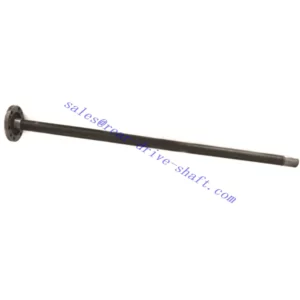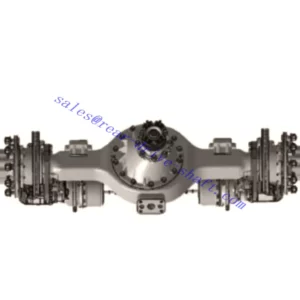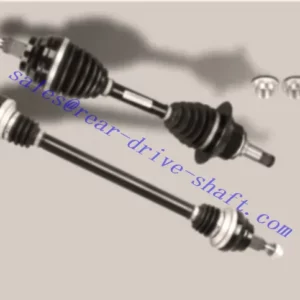Description
| Materlal and Surface Treatment | |
| Cross shaft | Heat treatment of 20Cr2Ni4A forging |
| Bearing cup | 20CrMOTi forging heat treatment |
| Flange fork | ZG35CrMo steel casting |
| Spline shaft | 42GrMo forging heat treatment |
| Spline bushing | 35CrM0 forging heat treatment |
| Sleeve body | 42CrMo forging |
| Surface treatment | spraying |
| Flat key, positioning ring | 42GrMo forging |
What Is a Rear-Drive-Shaft?
The rear-drive-shaft is an important component in your vehicle’s drivetrain. This component transfers torque from your transmission to your differential and then to the rear wheels. This helps you to drive your vehicle efficiently and safely.
Historically, drive shafts were used in motorcycles and railroads but are now commonly found in cars as well. They have a number of advantages over chain drives or belts. For example, a drive shaft can be designed to transmit power over a greater distance, so it will be more robust and long-lasting.
In cars, drive shafts are usually tubular in design and are made from aluminum, steel or carbon fiber. They are typically forged or formed to ensure they are both durable and light.
When you shift into drive, your transmission sends a signal to your rear-drive-shaft that tells it to spin. This rotation causes the shaft to send torque to your differential.
The differential is the melon-sized part that sits between the two rear wheels of your vehicle. It is the last stop in your drivetrain before torque gets to your rear wheels.
If you experience problems making turns, or your car is having trouble shifting into gear, it might be time to have your driveshaft looked at by a certified mechanic. This can often be the result of a faulty u-joint that needs to be replaced or greased.
Another symptom of an ailing driveshaft is vibrations and shuddering. This can be caused by loose u-joints, worn carrier bearings or a bad center bearing.
Vibrations and shuddering can be difficult to detect, but they’re one of the best signs that your driveshaft is failing. This is because they’re typically the result of bushings or u-joints wearing down and not bolting down properly.
You might notice this problem when accelerating from a stop or low speed, especially when you hear clunking noises from your driveshaft while driving at these speeds. A damaged u-joint or carrier bearing can cause these issues, so it’s vital to have the problem corrected by a mechanic as soon as possible.
A worn or broken drive shaft will cause your engine to misfire when you engage the clutch. You’ll also notice that you are losing more power to your rear wheels than normal. This is because the broken bits of your driveshaft are flying all around your engine, which will damage other components as they pass through them.
If you have a broken drive shaft, it’s best to have it repaired as quickly as possible, as it can be an expensive repair. The broken bits can also catch on other parts of your vehicle or the road itself, which will cause serious damage.
If you’re in the market for a new rear-drive-shaft, you can find many options on the Internet. They are often cheaper than new OEM parts, and can be just as functional.
Why choose us?
1) Customization: With a strong R&D team, we can develop products as needed.
2) Quality: We have our own complete inspection and testing equipment, which can guarantee the quality of products.
3) Capacity: Our annual production capacity exceeds 500,000 sets. At the same time, we also accept small batch orders to meet the needs of different customers.
4) Service: We focus on providing high quality products. Our products meet international standards,



